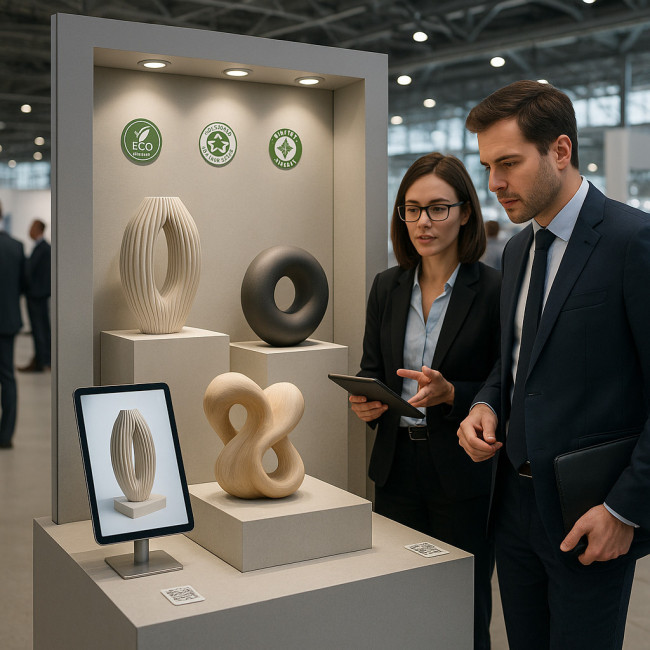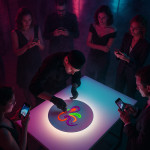Object designer conferences: set a mini showcase corner for institutional buyers
You do not need a giant stand to seduce museums, public agencies or hotel groups at a design fair. A well-crafted mini showcase corner can concentrate your story, cut costs and generate better leads. This guide shows object designers how to plan, build and promote a compact booth that speaks directly to institutional buyers—without losing an ounce of impact.
Object designer conferences: why the mini showcase corner wins
Institutional buyers attend conferences with a tight agenda. They value clarity, authority and quick comparisons. A small, curated corner delivers these needs faster than sprawling booths packed with distractions.
Six power benefits
- Lower budget, higher ROI. Smaller footprints slash space and build fees while keeping conversion rates high.
- Focused narrative. Three to five hero objects make your vision memorable.
- Easier staffing. One spokesperson can handle questions without missing leads.
- Faster installation. Half-day set-ups reduce freight, labour and damage risks.
- Agile updates. Swap pieces overnight to match day-two buyer feedback.
- Sustainability points. Minimal materials speak to eco-conscious public institutions.
Cost comparison at a glance
| Booth size | Average U.S. cost* | Suggested object count |
|---|---|---|
| 30 sq ft (mini corner) | $4,700 | 3–5 |
| 100 sq ft (standard) | $15,700 | 8–12 |
| 200 sq ft | $31,400 | 12–20 |
| 400 sq ft | $62,800 | 20+ |
*Average cost per square foot = $157, Exhibitor Media Group 2023.
Source : Exhibitor Media Group
Plan your mini showcase in five clear steps

The rendering opposite shows exactly how a 30-square-foot corner can look when every centimetre serves a purpose: three hero pieces occupy staggered heights, certification badges line a slender back-wall strip, a tablet loops a 3D spin, while a discreet lead form perches at the edge of the counter. Note how traffic flows freely in front yet the narrative remains crystal clear; arriving decision-makers can take in the whole story in under ten seconds, then lean in for material samples without jostling. The compact lighting grid keeps energy use low, and the flat-pack plinths collapse into two cases that fit airline freight limits, proving that small scale and professional polish can coexist without compromise.
1. Define one institutional pain point per object
Each piece should solve a procurement challenge—durability, eco-certification, modularity or maintenance. Map those points into captions and talking cues.
2. Select display furniture that travels light
Opt for flat-pack plinths, tension fabric backdrops and clip-on LED spots. Weight matters when shipping to prototype timeline-driven events.
3. Produce museum-grade hero shots
High-resolution panels reassure cautious buyers. Follow our object designer hero-shot guide to avoid glare.
4. Integrate fast digital layers
- QR codes leading to 3D spins or AR try-ons.
- Instant spec sheets on tablets—no paper reprints.
- Live price configurator for small-batch orders.
5. Pre-book qualified meetings
Use directory SEO to warm up leads before the show. Our guide on SEO quick wins for object designers walks you through keyword targeting.
Design elements that build institutional trust
Certification wall strip
Line up FSC, Cradle to Cradle or EU Ecolabel badges at eye level. Public buyers often shortlist by compliance first.
Maintenance playbook binder
Offer a printed or tablet-based manual showing cleaning cycles, replacement parts and warranty terms.
Royalty and licensing clarity
Have sample clauses ready. If you work with limited runs, reference the models in our royalty model guide.
Lead-capture tactics that respect public procurement rules
- Short form: name, institution, purchasing timeline.
- Instant download: specs auto-emailed after badge scan.
- Opt-in compliance: checkbox for GDPR transparency.
Tip: link your form to craft designer event listings so visitors can bookmark your next appearance.
Quiz: Is your mini showcase corner conference-ready?
FAQ
- What size qualifies as a mini showcase corner?
- Anything under 35 sq ft counts. A 1 × 3 m stretch fits most conference floorplans.
- How early should I book my corner at top object designer conferences?
- Reserve 9–12 months ahead; premium corner spots sell out as the floorplan opens.
- Which materials travel best for compact displays?
- Aluminium frames, honeycomb panels and rollable graphic fabrics keep weight below airline freight tiers.
- Can a mini corner host live prototypes?
- Yes. Use battery-powered turntables or AR tablets to demo moving parts without heavy rigging.
- How do I measure success?
- Track qualified leads, follow-up meeting rates and purchase orders within six months post-event.
Next steps: convert corner buzz into long-term contracts
Block follow-up calls while interest peaks, refine proposals and send custom spec packs within 48 hours. With the right narrative and agile logistics, your mini showcase corner becomes the catalyst for repeat institutional orders.
Ready to claim your corner? Map your costs today, sketch a focused layout and start pitching that compact, high-impact presence.











